A “beautiful, thriving ecosystem” has emerged from the shadows after an iceberg the size of Chicago splintered off Antarctica, revealing a seafloor teeming with life. Once hidden beneath an icy ceiling, this newly exposed world is home to an array of weird and wonderful life forms, including icefish, giant sea spiders, and octopuses.
ADVERTISEMENT
The city-sized iceberg, called A-84, broke off from Antarctica’s George VI Ice Shelf in January 2025, uncovering a piece of the seafloor that’s never been seen by humans before. When the colossal calving event occurred, scientists on board Schmidt Ocean Institute’s R/V Falkor (too) in the Bellingshausen Sea quickly changed their plans knowing they had the chance to study an exciting, new situation.
“We seized upon the moment, changed our expedition plan, and went for it so we could look at what was happening in the depths below,” Dr Patricia Esquete, expedition co-chief scientist of the Centre for Environmental and Marine Studies and the Department of Biology at the University of Aveiro in Portugal, said in a statement.
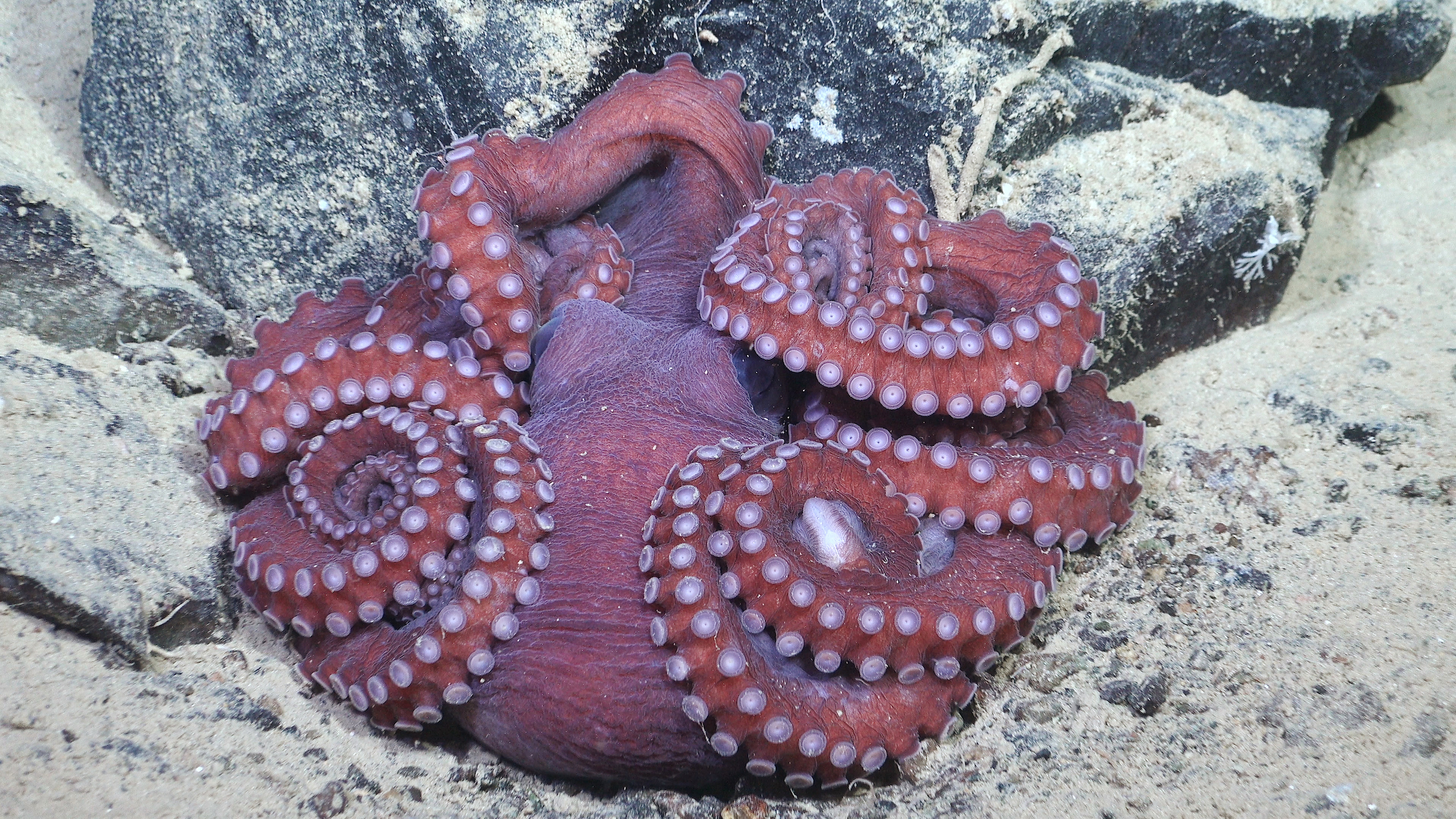
An octopus rests on the seafloor 1,150 meters deep in the Bellingshausen Sea off Antarctica in an area where the shelf break and slope are cut by several underwater gullies.
Image cREDIT: ROV SuBastian / Schmidt Ocean Institute
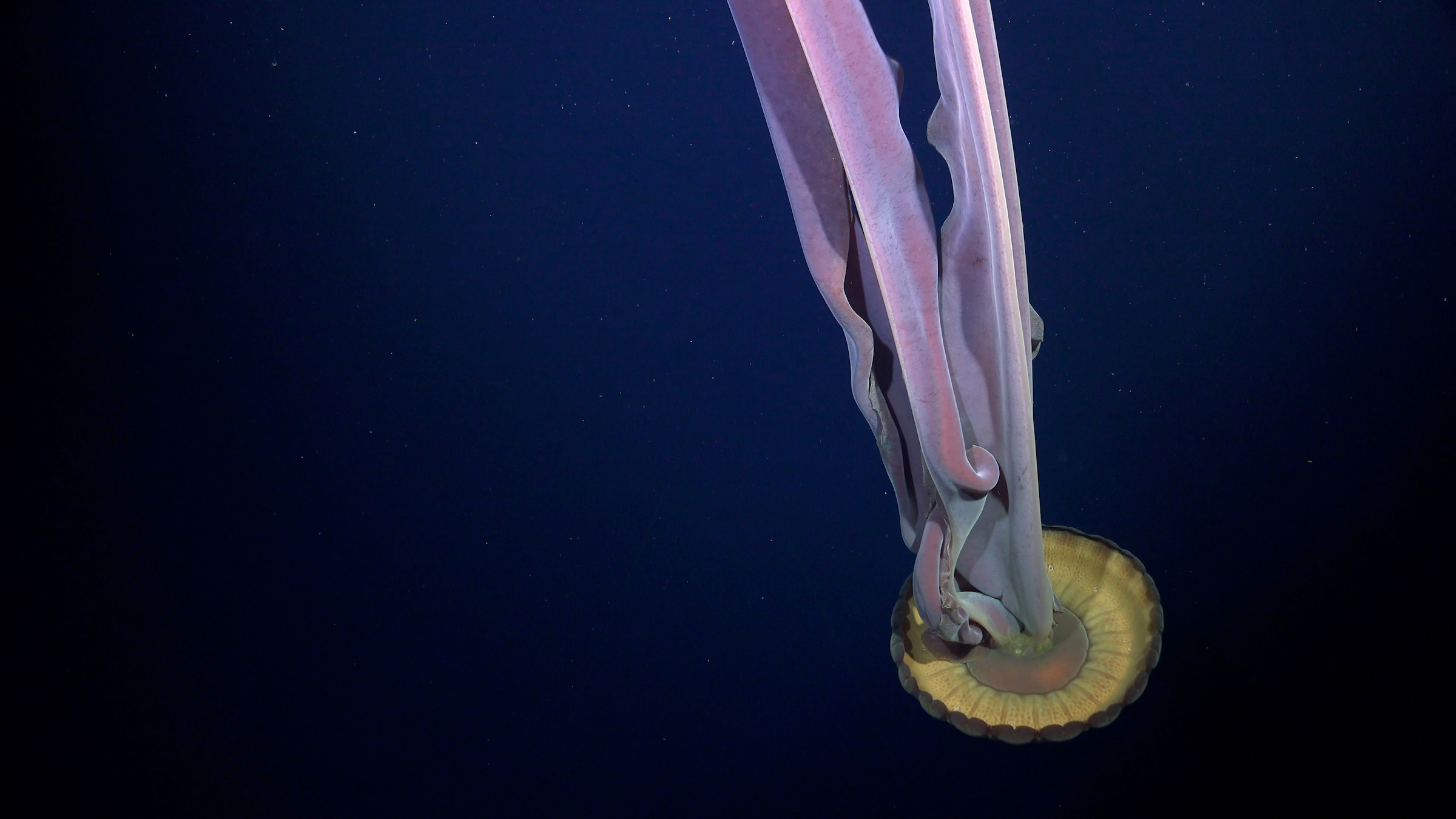
A giant phantom jelly documented in the Bellingshausen Sea off Antarctica in an area where the shelf break and slope are cut by several underwater gullies.
Image cREDIT: ROV SuBastian / Schmidt Ocean Institute
With the help of their remotely operated vehicle, ROV SuBastian, the team explored the deep seafloor for eight days at depths of up to 1,300 meters (4,265 feet). Their observations revealed large corals and sponges brimming with animal life.
The fringes of Antarctica are covered in floating ice shelves that hang over the sea like massive, suspended platforms. While other expeditions have explored the Antarctic seafloor, scientists rarely get the opportunity to study the hard-to-reach world beneath the hanging ice sheets.
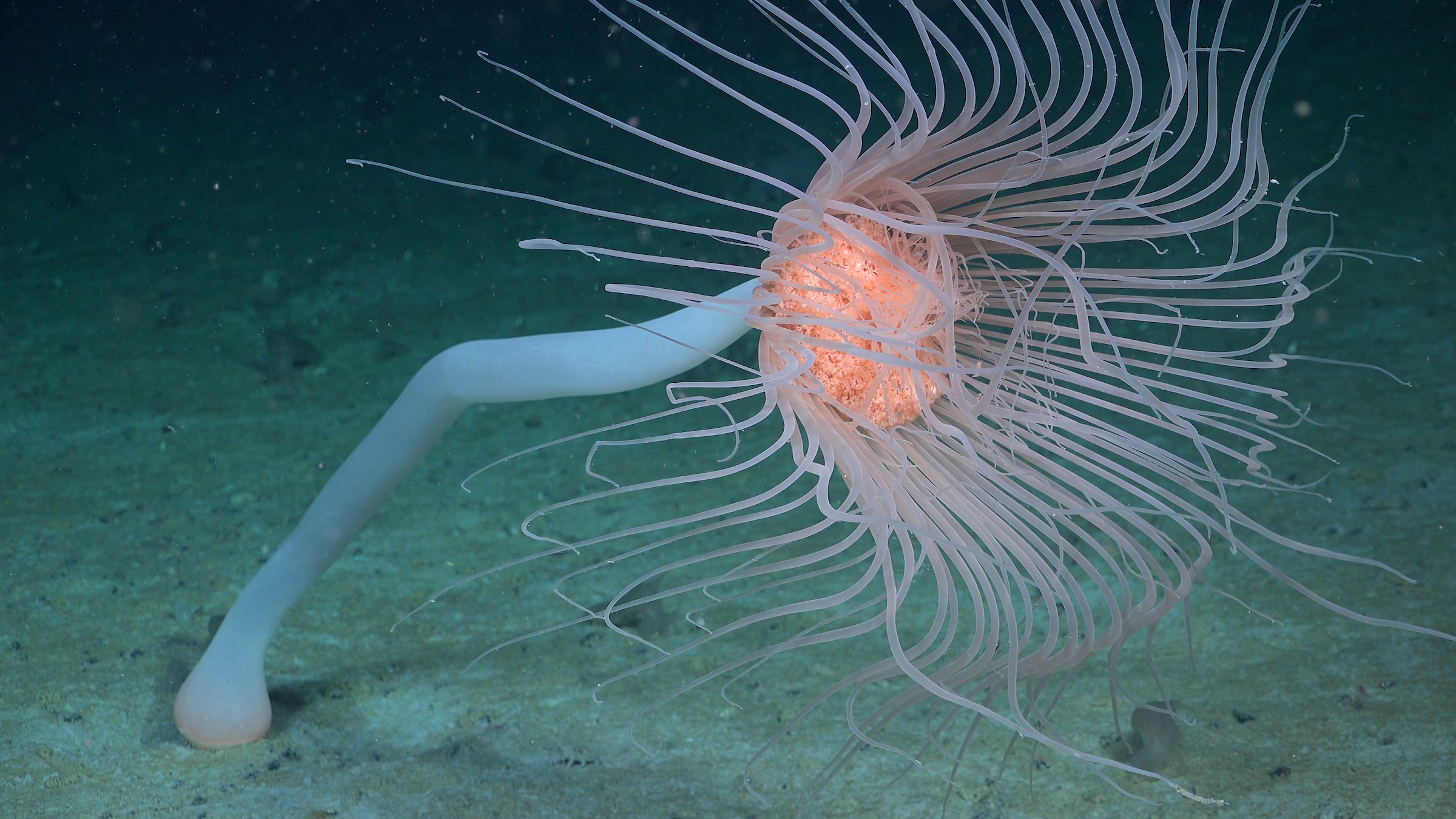
A solitary hydroid drifts in currents approximately 380 meters deep on an area of the seabed that was very recently covered by the George VI Ice Shelf.
Image credit: ROV SuBastian / Schmidt Ocean Institute
The researchers said they were blown away by the abundance of life thriving in this habitat, as well as its remarkable diversity. In most deep-sea environments, organisms rely on a steady drizzle of organic matter sinking from the sunlit surface. However, these Antarctic ecosystems have been sealed beneath 150 meters (nearly 500 feet) of ice for centuries, isolating them from this vital nutrient source and making their survival all the more extraordinary.
“We didn’t expect to find such a beautiful, thriving ecosystem. Based on the size of the animals, the communities we observed have been there for decades, maybe even hundreds of years,” said Dr Esquete.
ADVERTISEMENT
The team speculates that these lifeforms may derive their energy from ocean currents, which sweep nutrients beneath the ice sheet to sustain the ecosystem. While the exact process remains unclear, they hope further research will provide the answer.
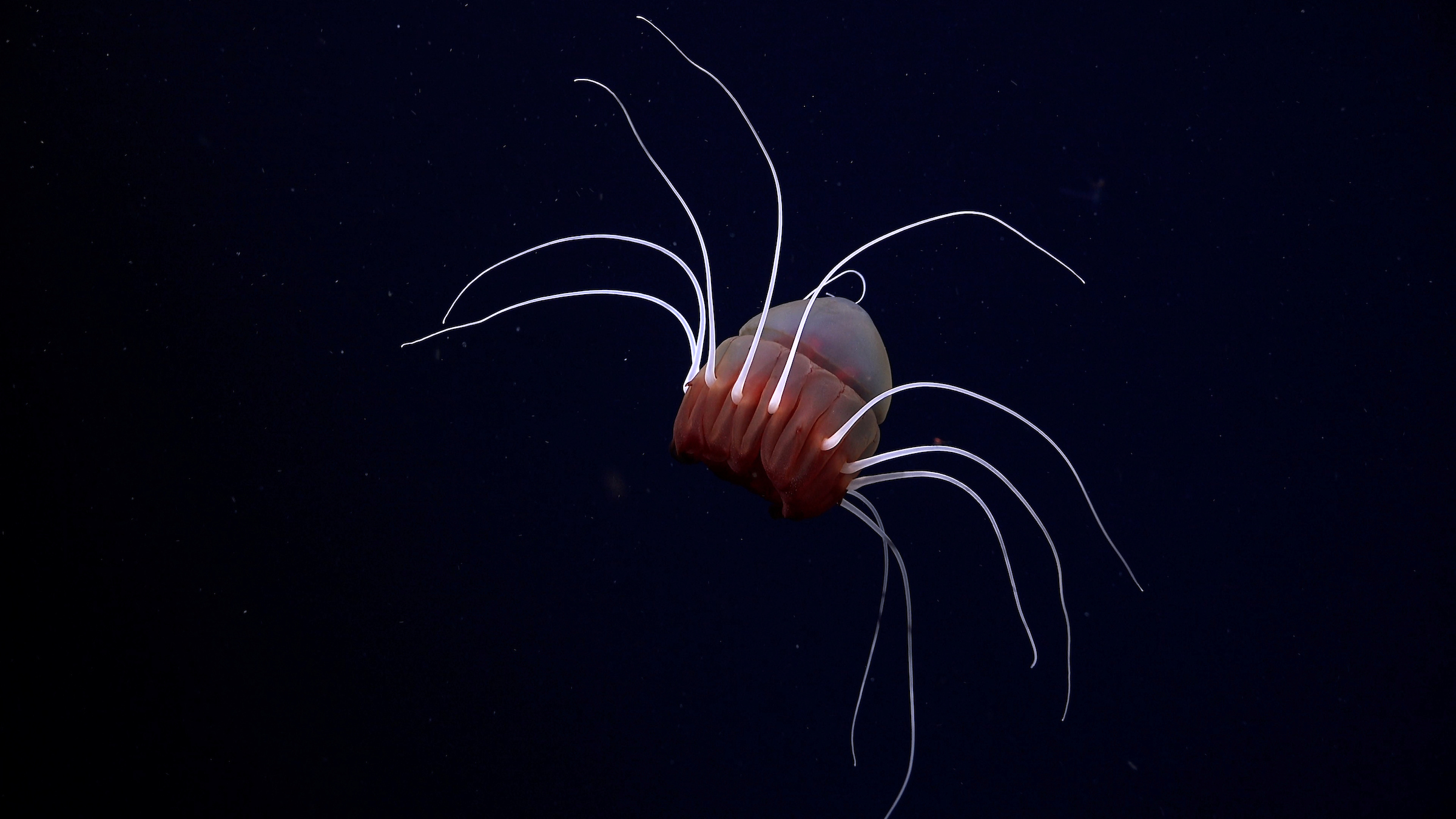
A Helmet Jellyfish in the Bellingshausen Sea off Antarctica.
Image credit: ROV SuBastian / Schmidt Ocean Institute
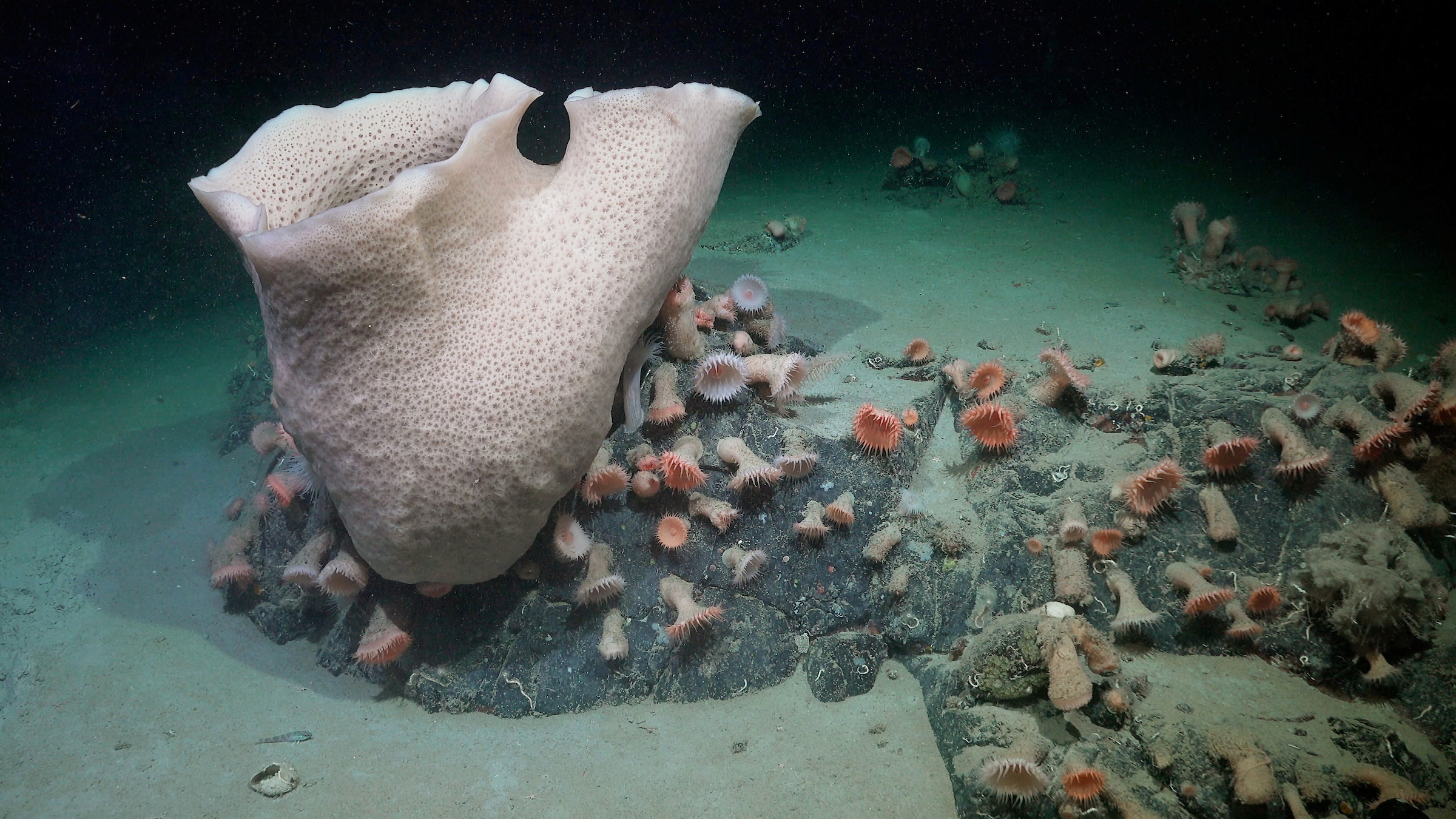
A large sponge, a cluster of anemones, and other life is seen nearly 230 meters deep at an area of the seabed that was very recently covered by the George VI Ice Shelf.
Image credit: ROV SuBastian / Schmidt Ocean Institute
“The science team was originally in this remote region to study the seafloor and ecosystem at the interface between ice and sea,” said Dr Jyotika Virmani, Schmidt Ocean Institute Executive Director.
“Being right there when this iceberg calved from the ice shelf presented a rare scientific opportunity. Serendipitous moments are part of the excitement of research at sea – they offer the chance to be the first to witness the untouched beauty of our world.”
Source Link: An Iceberg Detached From Antarctica, Revealing A Never-Before-Seen Ecosystem Of Deep Sea Life